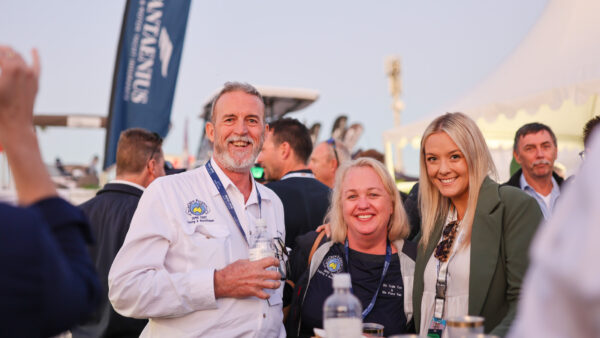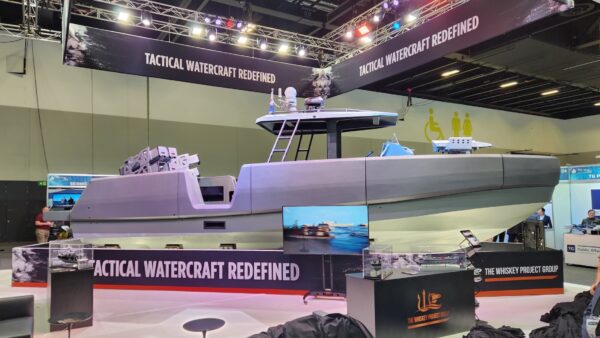Regularly referred to as the second-most difficult thing to build after a space shuttle, the ability for a country to build its own submarines is a measure of industrial sophistication, a critical bit of sovereignty and more besides.
“If you can build a submarine you can pretty well build anything,” Chris Burns, then-CEO of the Defence Teaming Centre, told Manufacturers’ Monthly recently.
The ASC’s website comparison of the Collins Class subs to hardware including Boeing’s 777 airplane makes the degree of complexity clear clear.
Introduced in 1995, the airliner weighs in at 250 tonnes, runs 40 systems, uses 550 suppliers, is made of 100,000 parts, and takes 50,000 hours to assemble.
The Collins class sub is 3,000 tonnes, has 108 systems, relies on 1,600 suppliers, comprises 500,000 parts and takes 2.5 million hours to assemble.
Of course, the Collins fleet will begin to be retired in 2025, replaced by a dozen 97-metre, 4,500 tonne Shortfin Barracuda Block 1A vessels, designed by DCNS and built at Adelaide.
The decision to make these conventionally-powered vessels in Australia was the right one, argues Burns, who led the DTC from May 2010 until the end of June, advocating for SA’s defence manufacturers.
“As an isolated island nation, with greater than 90 per cent of our imports and exports coming by nine key shipping lanes, the submarine is the most important and essential piece of military hardware we’ve got,” explained Burns.
“So we couldn’t be in a situation where for your most important piece of military hardware you were reliant on an overseas country for spare parts.”
Though the reliability of the Collins has sometimes been maligned, the reason the program went ahead sadly gets forgotten from time to time, noted Burns.
The drought of spare parts during the 1982 Falklands conflict saw Australia’s Oberon submarines tied up due to our dependence on the UK as a supplier. It was later decided that if the situation was not to be repeated, Australia should build its submarines in-country.
Getting the drumbeat going
The decision to base the submarine build at Adelaide was the right one, believes the Teaming Centre.
The ASC workforce has 2,600 skilled tradespeople and engineers, as well as the existing infrastructure. A new factory, “a bit larger than the Adelaide cricket ground” must be built to make the new subs, according to DCNS.
“Nothing against Western Australia; they are fully capable of doing the middle-level maintenance,” said Burns of the shipbuilding rival state.
“What they don’t have is that experience – for example, here in South Australia we can physically cut a hole in the submarine or cut the submarine in half in order to refit it.”
Shipbuilding projects such as the Future Submarines and Offshore Patrol Vessels are hugely important to the state’s industrial strength. It is losing production at Holden’s Elizabeth plant next year and the future of the Arrium Whyalla steelworks is not certain.
The state has only 8 per cent of Australia’s population, but about 25 per cent its defence industry.
SA’s DTC has long campaigned for a continuous shipbuilding program to level out peaks and troughs in work and consistency for the shipbuilding workforce.
A claimed premium of 30 per cent to build submarines here was sometimes cited by critics of the DCNS contract.
Burns said this is unfair, and the local naval defence industry hasn’t had the chance – due to the stop/start nature of contracts in the past – to build up its muscle tissue.
“With the Air Warfare Destroyers from ship one to ship two you had a 30 per cent productivity improvement and from ship two to ship three we’ll have a 20 per cent improvement in productivity,” said Burns.
“And that’s consistent with when we built the Anzac frigates, when we built them from scratch as well. Once you get the drumbeat going and the workforce aligned and productive, then you are globally competitive and there is no premium to pay.”
Any premium is also more than negated by things such as investing in the local industry, taxes being paid and not having to pay welfare to workers between jobs, he added.
The future is nuclear
Some experts have hypothesised that DCNS was selected as the winner of the Competitive Evaluation Process due to its Barracuda class submarines being nuclear powered. If policy and community attitudes change, the option of Australia getting nuclear vessels would be there, the theory goes.
The Adelaide Advertiser reported last month that the incoming federal government will be advised to consider SA as a hub for nuclear ships and submarines.
“As Adelaide is being positioned to be the centre of continuous ship and submarine construction in Australia, the federal and state governments should jointly develop a plan to strengthen university-level instruction in physics, nuclear engineering and necessary supporting sciences based in SA,” the Australian Strategic Policy Institute wrote in a brief for the next government.
Consistent with the above comment, Burns believes that capability around a nuclear industry needs to be developed before atomic-powered submarines can be planned. A first entry into nuclear power should probably not be a submarine.
“You want to learn how to build a power plant on the shore, to learn how to process the ore, to develop the fuel, how to store the fuel, how to run a power plant ashore before you start going into the mechanics of building a nuclear submarine,” he said.
The state is debating the possibility of a nuclear industry, and the government’s response to the Nuclear Fuel Cycle Royal Commission. It’s an exciting prospect for the defence industry, believes Burns, who has just finished as head of the DTC and begun this month as the SA’s Mental Health Commissioner.
“Once you start storing nuclear waste here, we’re going to have to have specialist nuclear waste transportation ships – now I’m told that the complexity of a nuclear waste transport ship is almost as complex as building a submarine, because of the safety, the requirements of the pressure hold and what have you to transport the nuclear waste,” he said.
“So having built submarines here, we’d be ideally in line to build nuclear waste transportation vessels, and if we’re in the nuclear waste storage facility then we might migrate then to processing the ore and actually building a nuclear power plant if it was commercially viable.”
SOURCE: Manufacturers Monthly


